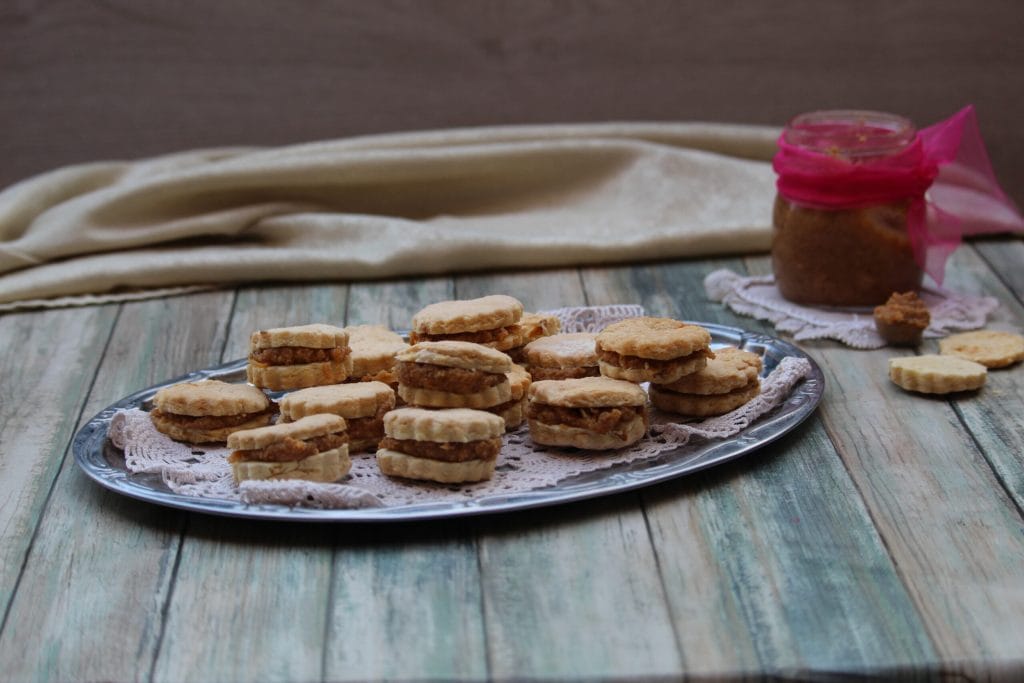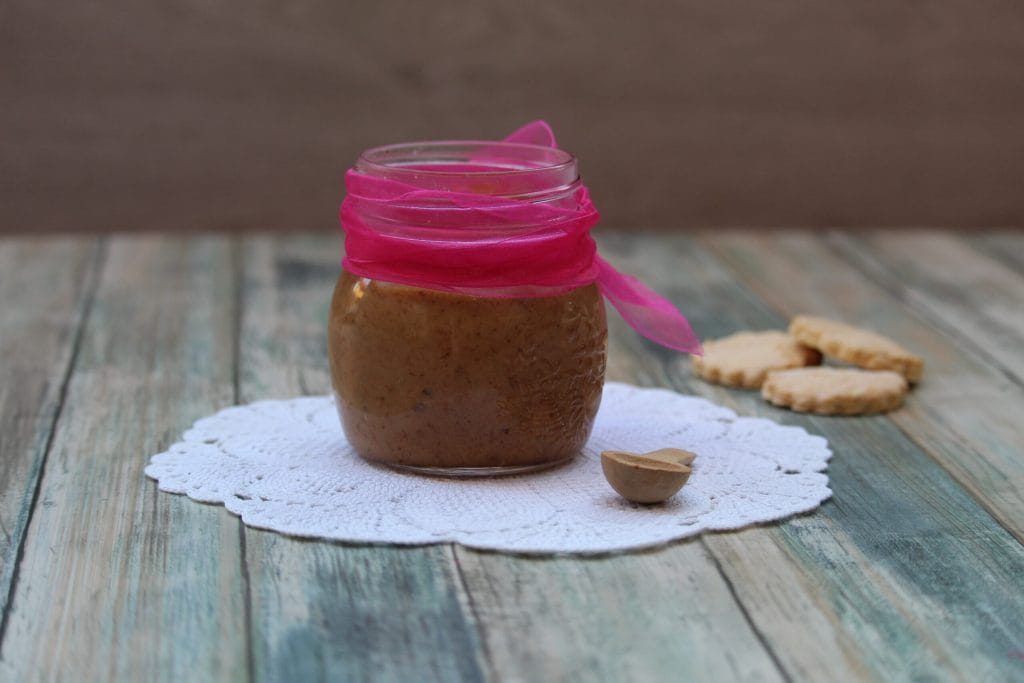In South American countries like Argentina, Bolivia, Paraguay, Peru, and Uruguay, the alfajor is composed of two cookies made with flour and cornstarch, joined by a sweet filling, usually consisting of dulce de leche (a cream made from milk and sugar), and coated in chocolate glaze (alfajor negro) or covered with powdered sugar (alfajor blanco) or coconut.
The alfajor has roots in Arabic culinary tradition, as its name, in Arabic, means ‘filling’ (al-hasú).
The production of typical Santa Fe alfajores began in 1851 in a place located at the southwest corner of San Jerónimo and 3 de Febrero, a few meters from the Cabildo (where the Santa Fe Government headquarters currently stands).
Its owner and creator of the alfajor was named Hermenegildo Zuviría, nicknamed “Merengo.”
The basic ingredients of this alfajor were: toasted savory biscuit rounds, filled with dulce de leche and covered with meringue.
The alfajores from the city of Rosario, in the Province of Santa Fe, are glazed and generally filled with Dulce de leche.
The nickname “Merengo” gave rise to a brand that is still available today in shops that sell alfajores in the city of Santa Fe.
The simplest way to prepare dulce de leche is to use sweetened condensed milk, but the following is the classic recipe.

- Difficulty: Easy
- Cost: Inexpensive
- Rest time: 2 Hours
- Preparation time: 10 Minutes
- Portions: 20/25 cookies
- Cooking methods: Oven
- Cuisine: South American
- Seasonality: All seasons
For the Alfajores dough:
- 1 cup all-purpose flour
- 1 cup cornstarch
- 1/2 cup butter (softened)
- 1/3 cup sugar
- 2 eggs
- 1 lemon
- 1 teaspoon baking powder
- 4 cups whole milk
- 3/4 cup sugar
Preparation
Sift flour, cornstarch, and baking powder.
Mix butter and sugar in a bowl and beat until creamy. Add the yolk first, then the whole egg.
Pour the flour mixture and grated lemon zest into the dough.
Wrap the dough in plastic wrap and let it rest in the fridge for about 2 hours.
Roll out the dough with a rolling pin to a thickness of about 1/4 inch, cut with a large cookie cutter and place on a baking sheet lined with parchment paper, bake at 350°F for about 12-15 minutes.
Once baked, let cool on a rack for about 4 hours before filling them.

For the dulce de leche:
Pour the milk and sugar into a saucepan. Cook over moderate heat, stirring until it reaches a boil and continue for about 2 hours.
(When the sugar is completely dissolved, you can add a pinch (1 tsp) of baking soda to prevent the milk from curdling and improve consistency)
At this point, reduce the heat to medium and continue cooking.
The longer you let it cook, the denser and darker the dulce de leche will become. For a lighter shade, turn off the heat after 90 minutes.
Pour the dulce de leche into a bowl and let it cool to room temperature.
Spread the Dulce de Leche cream to fill the Alfajores and decorate with powdered sugar.

Alfajores Variations:
Santafesino
The typical alfajor from the province of Santa Fe (Argentina) has 3 discs of unsalted cracker/pie crust, filled with dulce de leche and sprinkled with sugar glaze.
Rogel
The alfajor Rogel, especially known in the Torta “alfajor” Rogel version, has the same filling but is covered in Italian meringue. In its cake version, it is often homemade and also found in pastry shops, where it’s part of the typical and basic sweets of Argentine cuisine.
Norteño
The typical alfajor from northwest Argentina. Made of two concave cracker discs, the filling is a sort of meringue made with egg white and cane sugar honey.
In the Spanish version, where they are considered typical Christmas sweets, they are made from a paste of almonds, nuts, and honey.
In the Spanish version, where they are considered typical Christmas sweets, they are made from a paste of almonds, nuts, and honey.
Online you can find both the packaged version of alfajores, the most famous brand being Luxury Havanna Alfajores x 12, and ready-made dulce de leche: Dulce de Leche San Ignacio 450g for €7.14
But do they also make alfajores in Chile?
Yes, but with some differences compared to Argentina.
🇨🇱 Chilean Alfajor
Made with hojarasca pastry, thin and very crunchy, similar to a dry puff pastry.
The dough usually consists of flour, egg yolks, butter, and sometimes a bit of liquor (pisco or vinegar).
Filling: only manjar (the Chilean version of dulce de leche), thicker and less sweet than the Argentine one.
Usually uncovered, or dusted with powdered sugar.
Thinner, crunchier, and less moist.
More rustic in appearance and artisanal production.
Often homemade or sold in rural areas and traditional fairs.
Part of the Chilean sweet tradition along with cocadas and empolvados.
🇦🇷 Argentine Alfajor
Made with soft shortcrust pastry, often with cornstarch for a crumblier texture.
Some include honey or spices (especially in the Córdoba or Santa Fe versions).
Filling: Very creamy and abundant dulce de leche.
Often covered in dark or white chocolate, glazed or rolled in shredded coconut.
Industrial versions are very popular (Havanna, Cachafaz, Guaymallén, etc.).
Soft, more moist, and taller.
Both artisanal and industrial production.
An emblem of Argentine pastry, consumed everywhere: at school, in the office, in cafes.
Wide regional and commercial variety.

